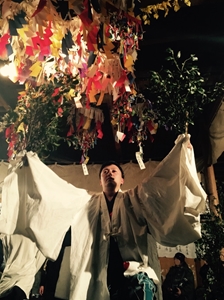- HOME
- Search in the site
- Hana Festival (Kami-Kurokawa, Toyone Village)
Toyone-Village Hana Festival (Kami-Kurokawa, Toyone Village)
Date : 01/03/2024 - 01/04/2024
An unusual traditional festival of the Okumikawa area
The Hana Festival is held annually in areas around the village of Toyone and has continued for more than 700 years. It is even designated a national important intangible folk cultural property.
The venue is decorated in five colors of paper with dances performed for the gods before your eyes. Children offer cute performances in addition to the main dances through the night by Japanese demons with giant masks, wielding battle axes.
Kami-Kurokawa's Hana Festival is performed every January 3–4 at Kumano Jinja Shrine. Remember that it's cold, so dress warmly!
























 Keyword
Keyword









